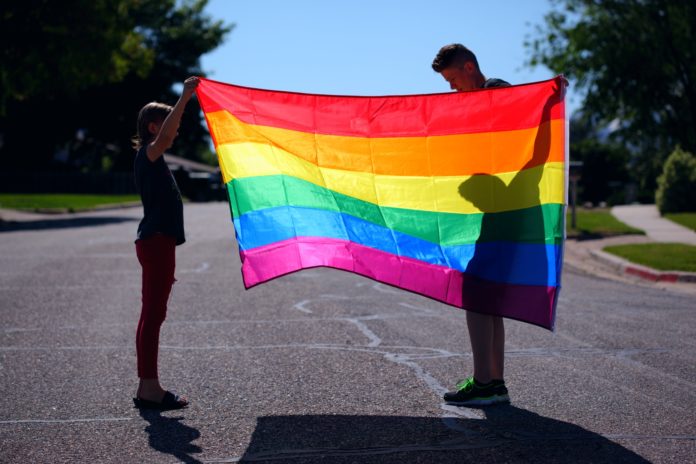By Sam Blanchard
In 2021, there are a record number of proposed laws and policies attacking the rights of LGBTQ+ people across the United States. A large portion of the bills are targeted at trans youth, preventing trans women and girls’ participation in sports consistent with their gender identity, as well as blockades to gender-affirming healthcare. Some are already signed into law. It is highly likely that these conversations will show up in our classrooms, both remote and in person.
In 2019, nearly 92 percent of LGBTQ+ youth reported they felt distress and discomfort because of anti-LGBTQ+ remarks made at school, and many students reported missing school due to feeling unsafe and experiencing harassment. If we expect LGBTQ+ students to learn in our classrooms, we must diligently protect and advocate for their safety and their rights by making the classroom a space where all people belong. So, how can we practically prepare to facilitate critical and justice-centered conversations, while sending an explicit message of unwavering support to LGBTQ+ students?
Denounce hateful rhetoric—but don’t ignore what’s happening.
It should go without saying that identities of queer and trans people must never be up for debate. That means never creating an opinion or argumentative essay assignment where students debate someone’s humanity, such as whether transgender students should be allowed to play sports on the teams consistent with their gender identity. We must firmly denounce these harmful policies and anti-trans rhetoric any time it’s heard in our classrooms and schools. In my classroom, I often utilized the Speak Up strategies “Interrupt” and “Educate” created by Learning for Justice. The strategies are straightforward, effective, and can be taught to and used by students and staff.
At the same time, we should welcome conversations that acknowledge the current attacks, allow students to share messages of support, and encourage students to stay informed. Choosing to stay silent in our classrooms about injustices toward marginalized communities clouds any support we might show. We must be clear and consistent with our support, so our students don’t have to wonder where we stand. By making space for these conversations and current events in our classrooms, it allows students to practice having informed, critical, and respectful dialogue.
It’s also necessary to recognize that many of our LGBTQ+ students live with multiple marginalized identities, especially Black trans girls and queer students of color. These conversations can, and should, be extended to include all injustices toward all marginalized identities.
Learn alongside students.
There are times when students bring in content that we are not prepared to discuss in a safe and informed manner, such as if a student has questions about new anti-trans legislation before we’ve had a chance to see the news. Use the opportunity to model to students that educators do not always have all the information, and then model what actions you will take to get informed.
Most importantly, invite students to learn alongside you. In my classroom, this learning took shape in many forms. To start, I always thanked students when they shared with me issues and content that felt urgent and important to them.
This is also a great opportunity to ask students how they would like to learn about the issues and what activities they would like to do that are meaningful to their learning. Sometimes, students share that they read about the issues from a certain news outlet. In that case, I’d invite students to do research along with me. Then, we’d all report back with our findings during our next few morning meetings and grow together from there. Other times, I might share a Newsela article with the class, plan a lesson around it with content standards, and we would learn together during our literacy block.
Once you and your students are more informed, consider ways to extend the lessons that allow students to learn about how activists and allies are supporting LGBTQ+ people, and discuss what actions students can take to participate. This can be differentiated for all grade levels. For example, students can compare and contrast statements of support from organizations that are working to defend rights and protections for trans youth. Educators can plan lessons around how to write letters to policymakers and have students write their own letters in defense of queer and trans rights. This testimony to the U.S. Senate by Stella Keating, a 16-year-old transgender high school student, is a great example to include. In any of these lessons and activities, ask students to notice common language, what stands out, what is missing, what is being supported, and what is being critiqued.
All LGBTQ+ students deserve, at baseline, to feel safe at school. We must advocate for the safety and protection of all queer and trans youth, and we can start by having critical, inclusive, and justice-focused conversations in our classrooms.








